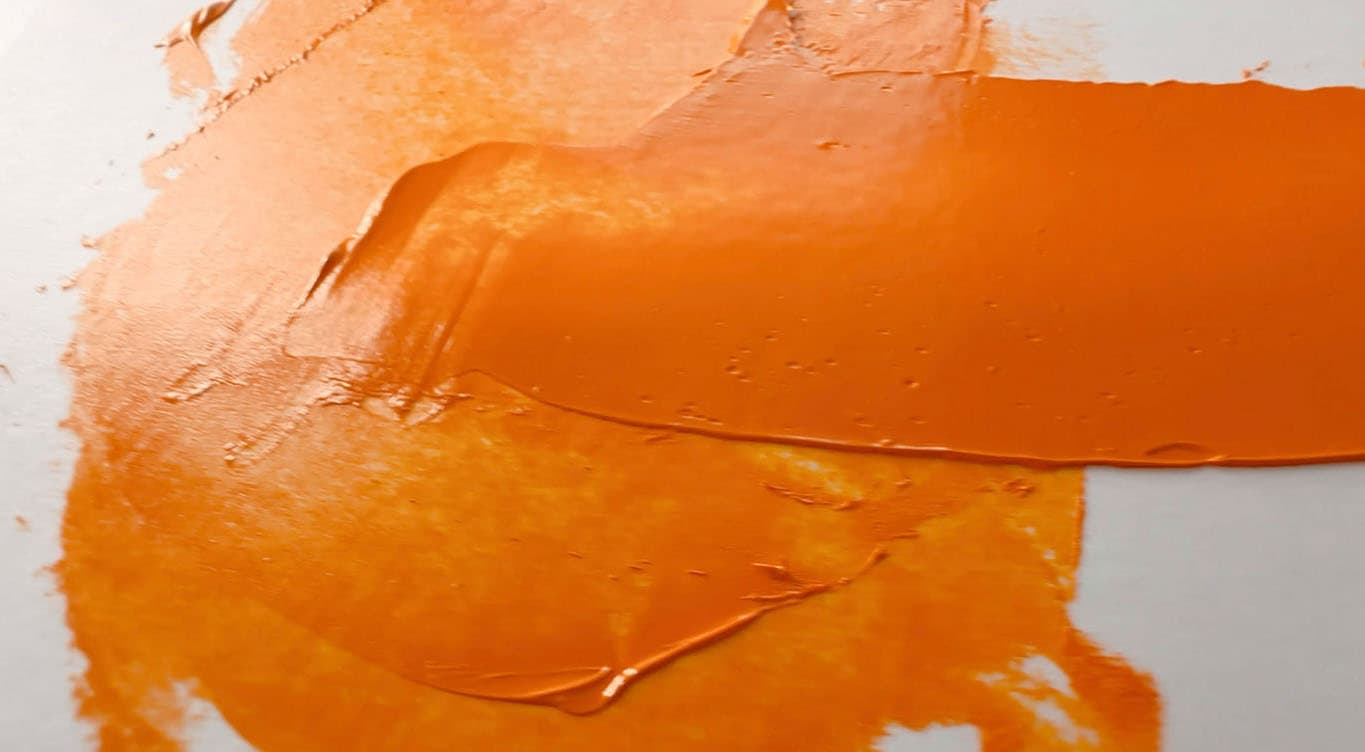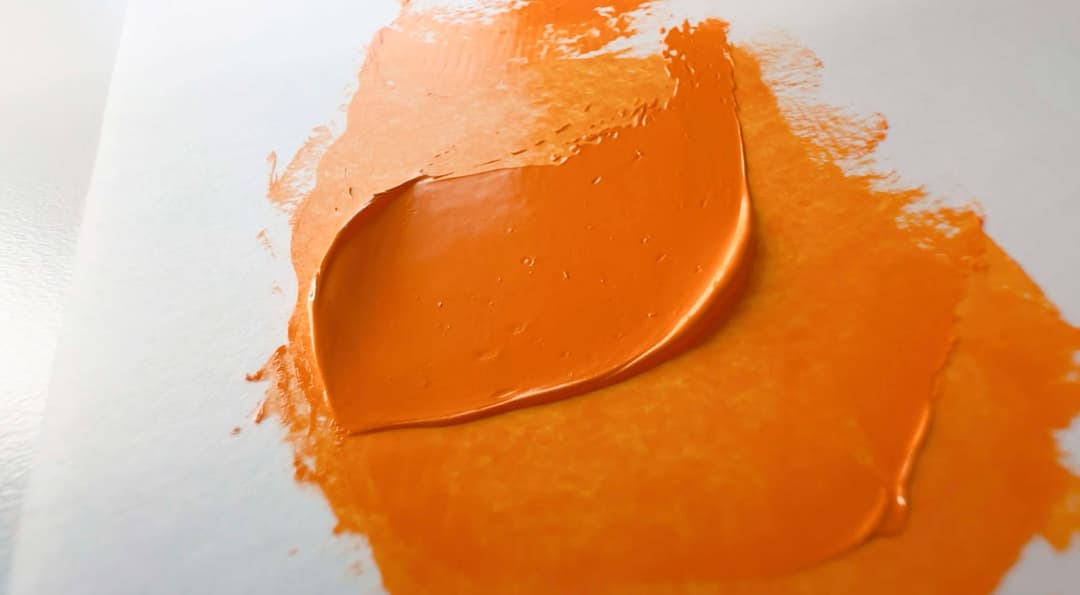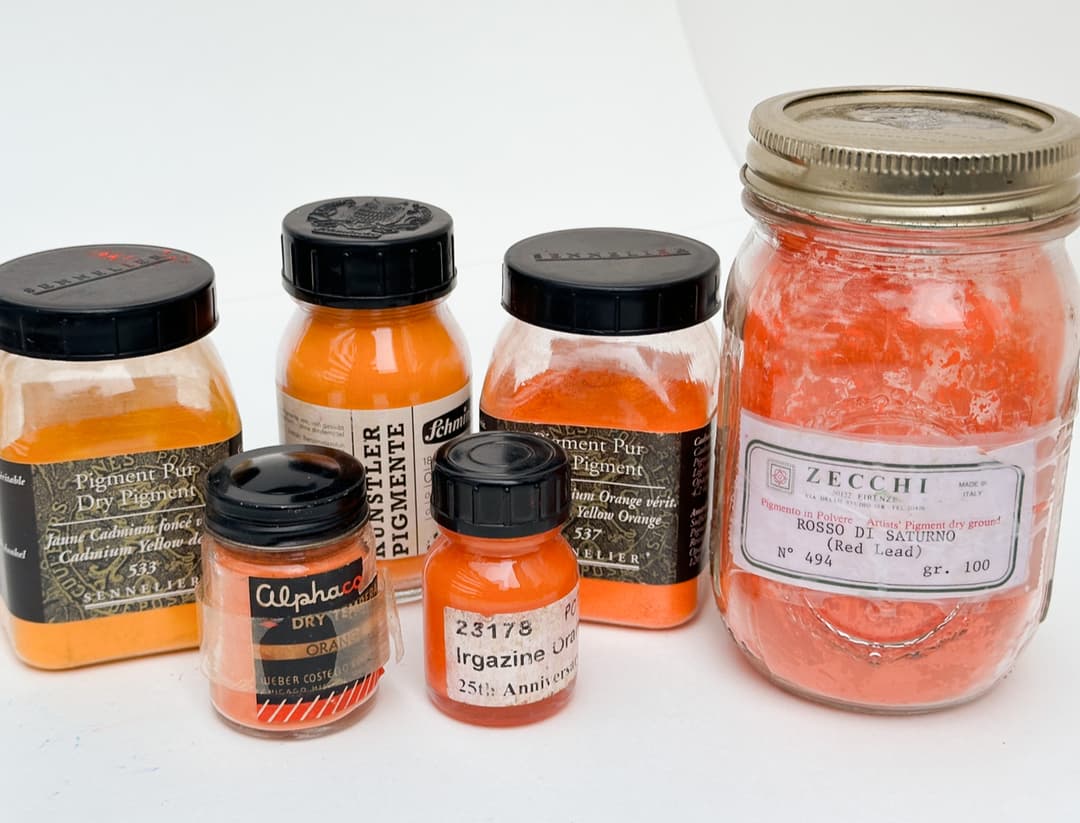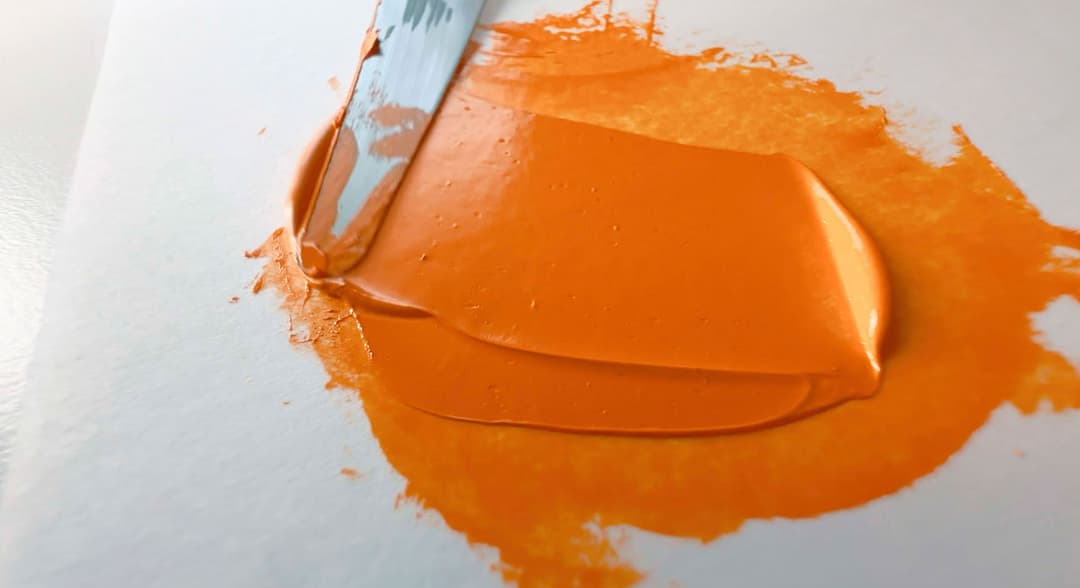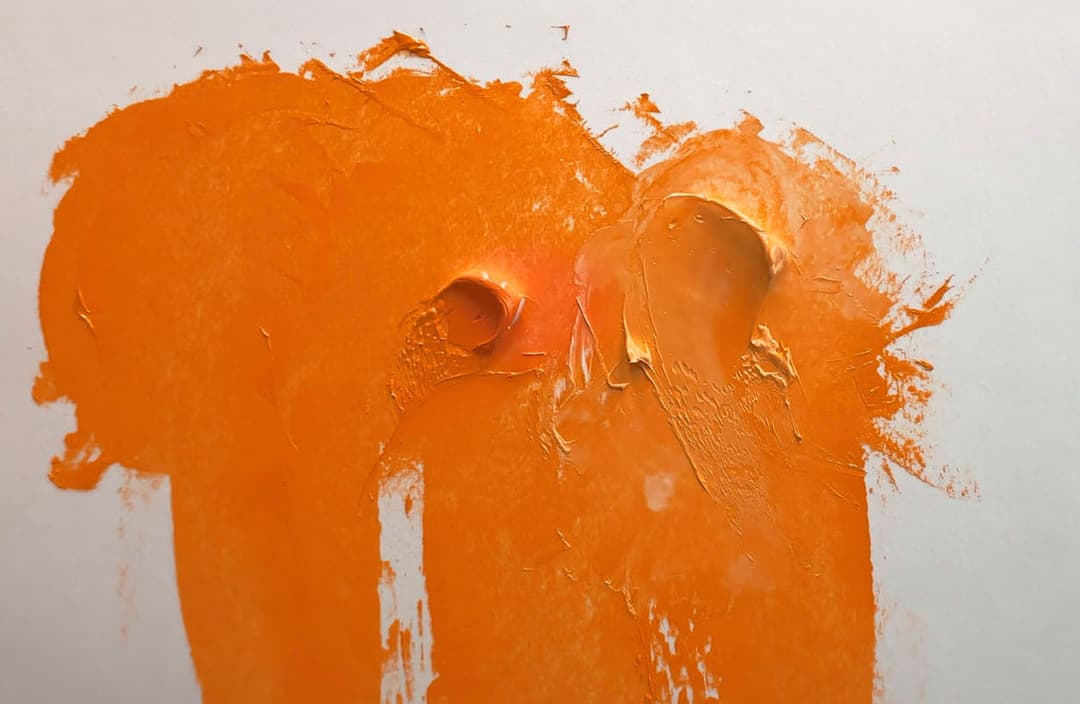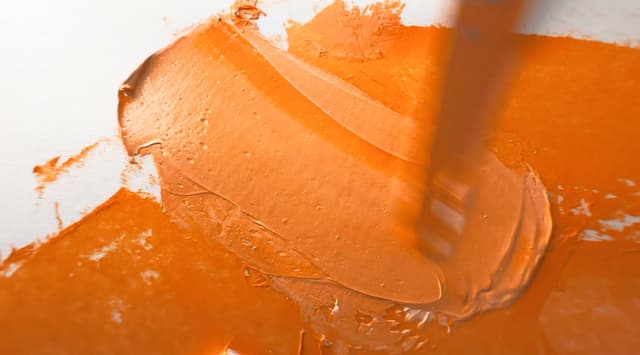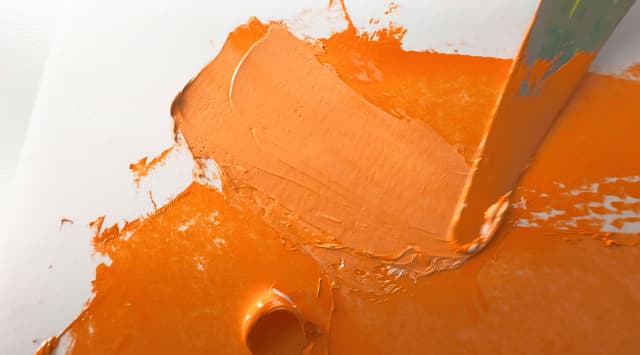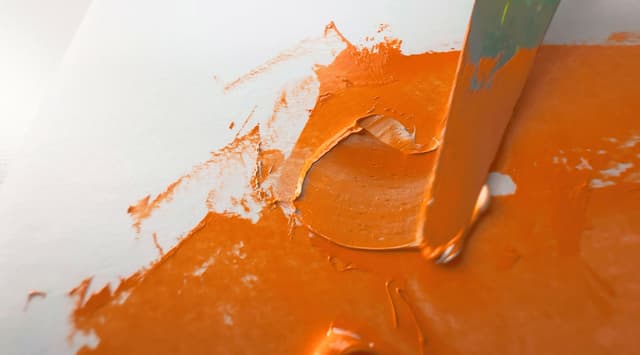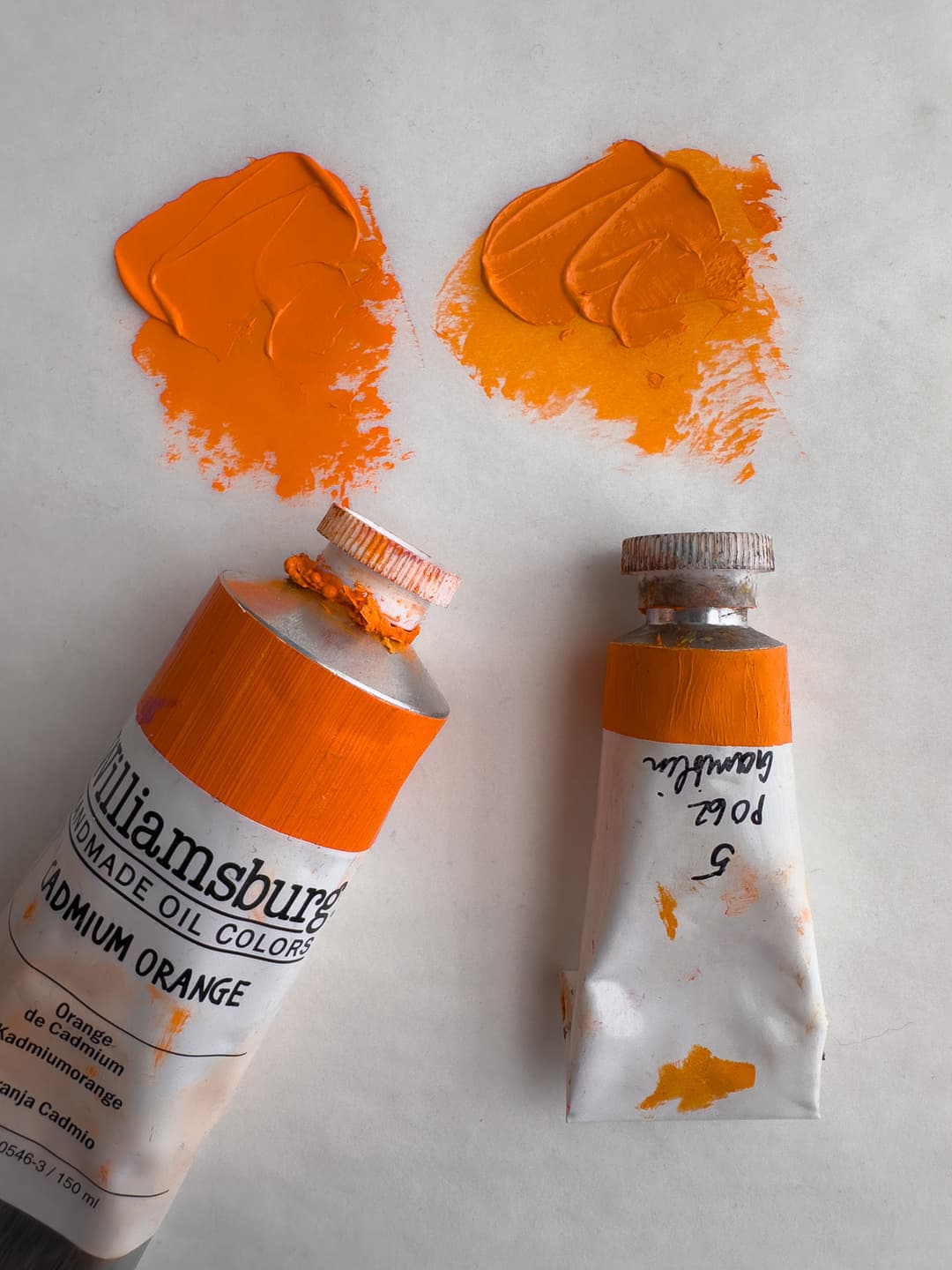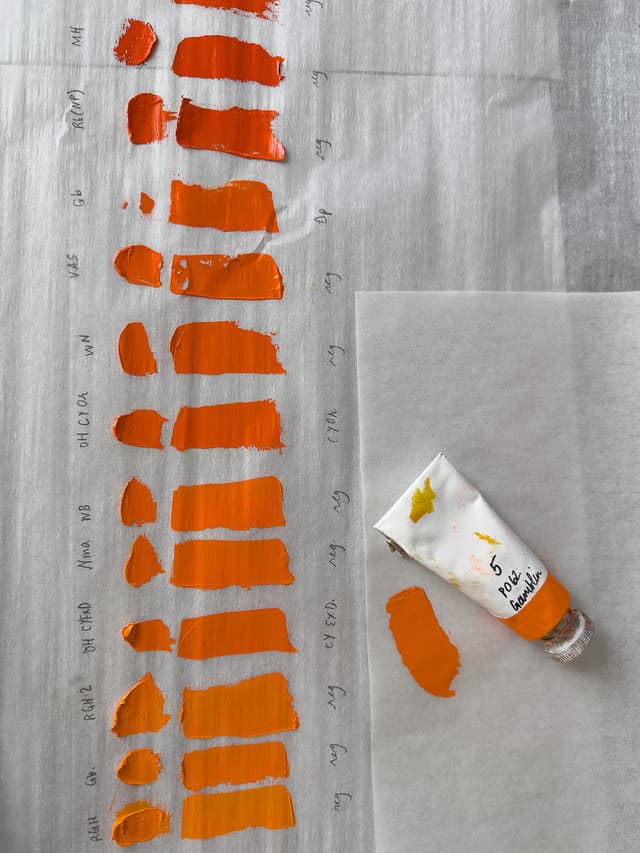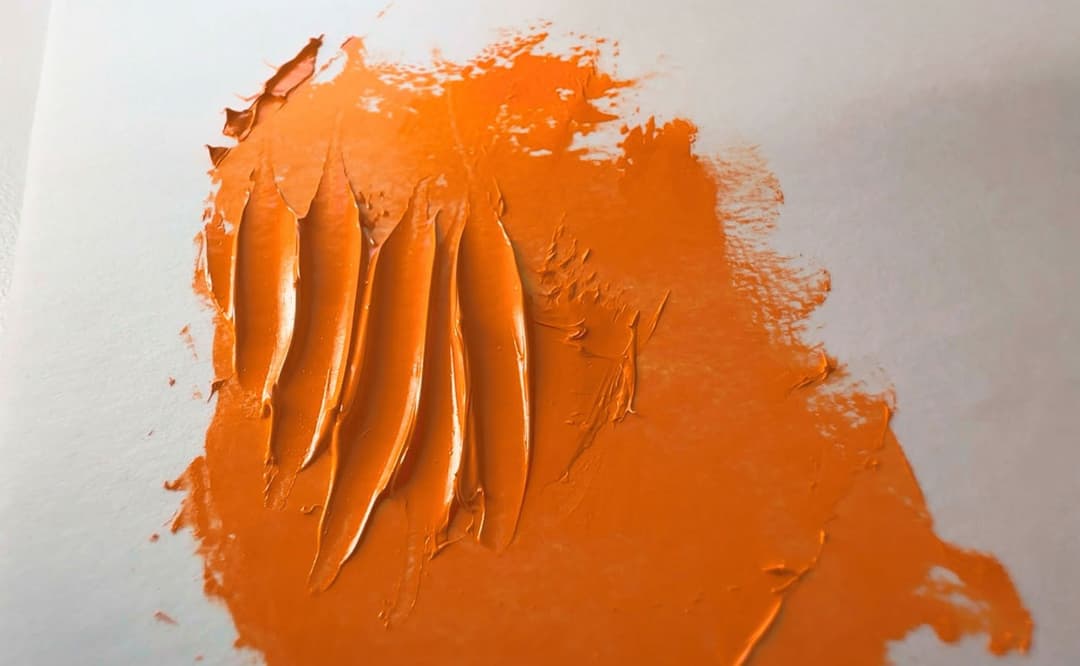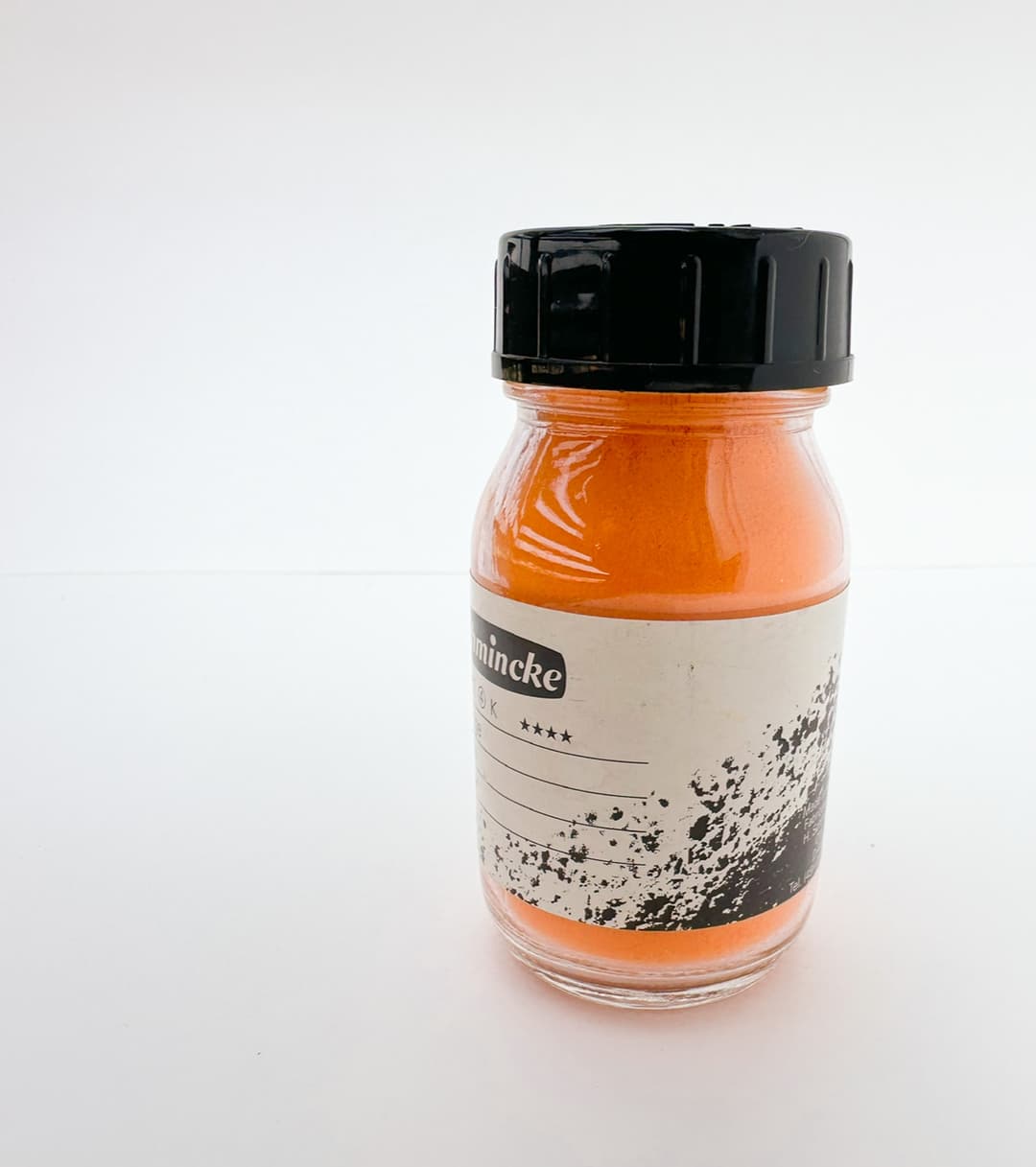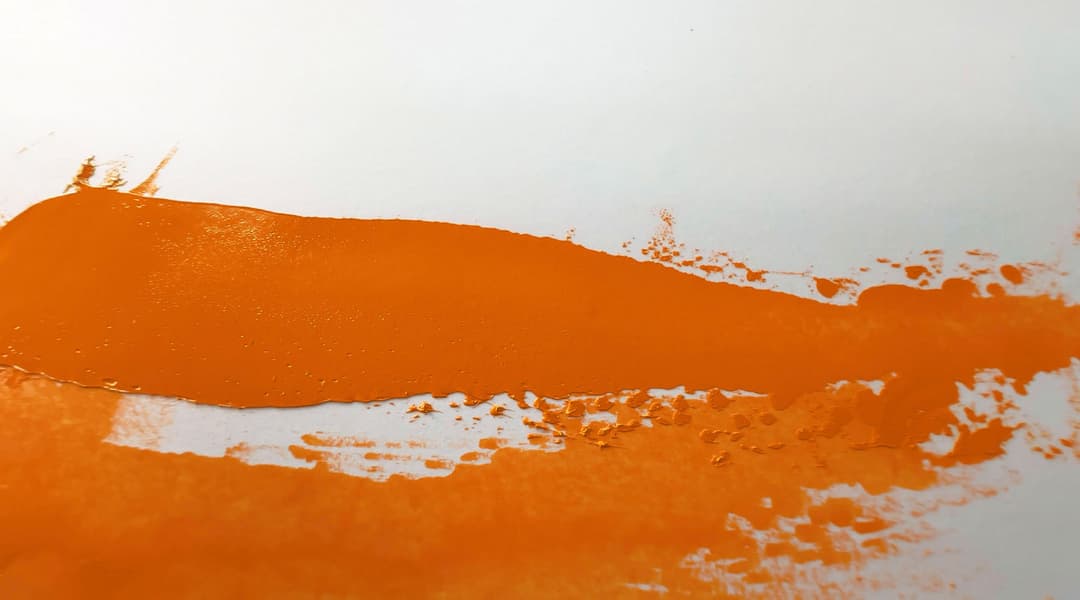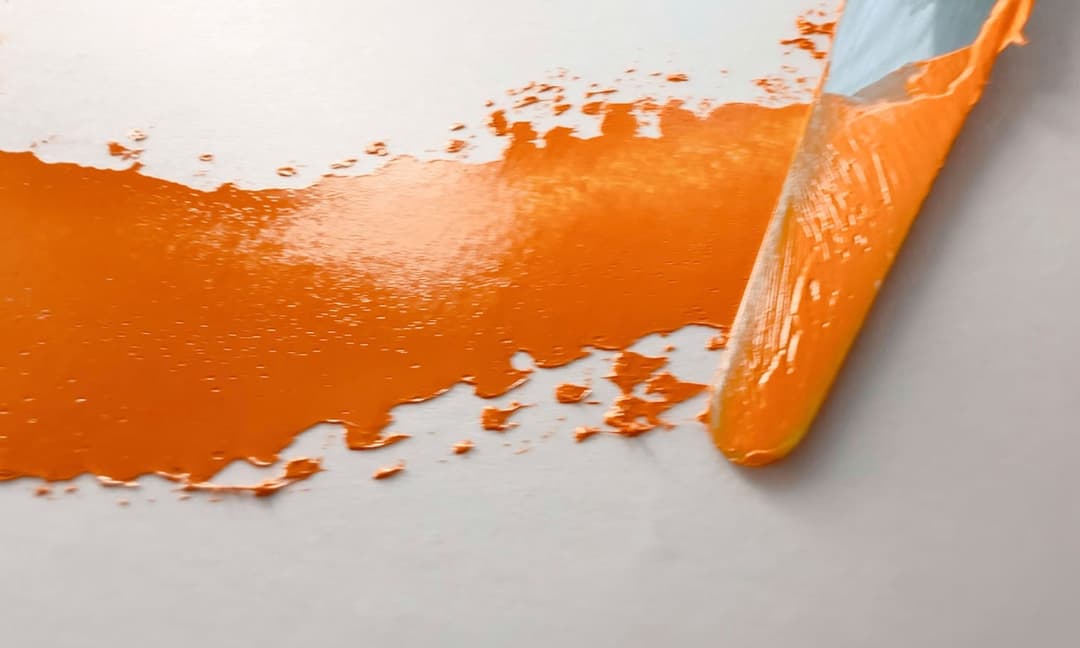The metal tubes of paint glistened subtly under the fluorescent lights in the paint aisle, with each uniform tube neatly hung in a row. I scanned through the titles, like Hansa Yellow Deep, then Transparent Orange, and turned over each one of the vaguely named tubes of yellowish-orange paints to look for the pigment information on the back. I was on a mission to find one pigment in particular, PO62. The tube marked Permanent Orange looked promising. Finally, there it was, PO62-- the only one in the store. Benzimidazolone Orange can be a bit hard to find as only a handful of brands offer it as a single pigment.
Back in the studio, I poured a pumpkin orange daub of this novelty orange onto the worn, greyed surface of a palette I'd had since my student days at RISD. The surface was rough with years of scraping down, cleaning, and adding new paint. Compared to the finest cadmium oranges, of which I'd grown quite fond, this orange had an odd note of desaturation to it. Taken in isolation, Benzimidazolone Orange looks incredibly bright, but set in an arpeggio of cadmiums, it looked a bit duller.
I soon began to quite enjoy this newcomer to the palette. While it would be nice to have even better lightfastness, for a synthetic organic orange, 7 out of 8 on the Blue Wool Scale is pretty good.
Perhaps the most common question about Benzimidazolone Orange is whether it can replace Cadmium Orange. We'll talk about it's features, its tints, and the million dollar question about cadmiums, and explore how it compares to the range of cadmium oranges.
